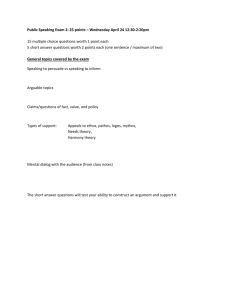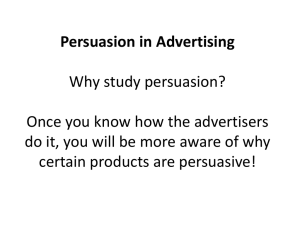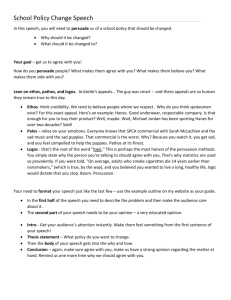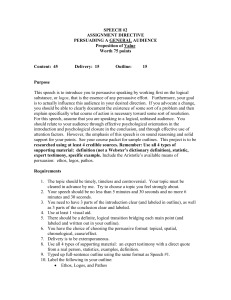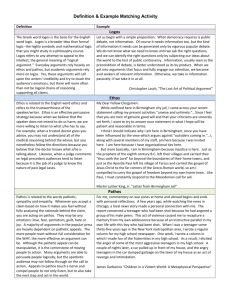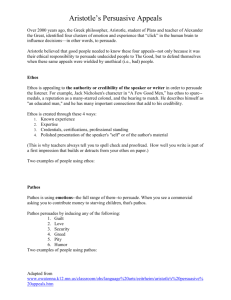The Rhetoric of the Op-Ed Page: Ethos, Logos, and Pathos
advertisement
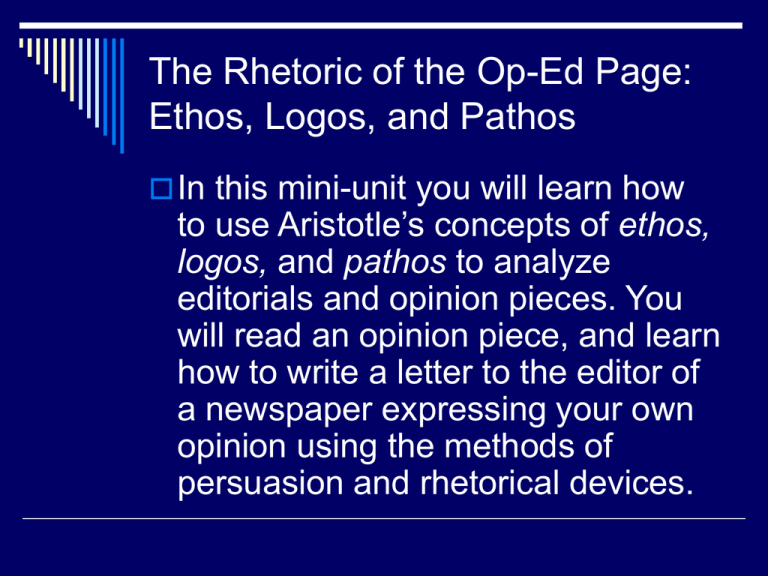
The Rhetoric of the Op-Ed Page: Ethos, Logos, and Pathos In this mini-unit you will learn how to use Aristotle’s concepts of ethos, logos, and pathos to analyze editorials and opinion pieces. You will read an opinion piece, and learn how to write a letter to the editor of a newspaper expressing your own opinion using the methods of persuasion and rhetorical devices. Journal Persuasion Think of a time you tried to persuade a parent, a teacher, or a friend. What were you trying to persuade them to do or think? What arguments did you use to persuade them? Were you successful? Why or why not? Persuasion in action In a small group, discuss the strategies you and your friends use when they are trying to borrow a car, go to a concert, buy new clothes, or achieve some other goal. Pick one situation and write a short skit about it showing your persuasive strategies in action. Each skit should demonstrate logical, emotional, and ethical persuasion. Rehearse and perform your skit for the class. 10 Participation points Vocabulary Preview of “A Change of Heart About Animals” humane = characterized by tenderness, compassion, sympathy for people and animals, especially for the suffering or distressed inhumane = not humane; lacking humanity, kindness, compassion cognitive = 1. of or pertaining to cognition 2. of or pertaining to the mental processes of perception, memory, judgment, and reasoning, as contrasted with emotional and volitional processes genetically wired = in your genes; predisposed empathy = 1. intellectual identification w/ or vicarious experiencing of the feelings, thoughts, or attitudes of another First Reading of “A Change of Heart About Animals” Draw a line where the introduction ends. Is it after the first paragraph, or are there more introductory paragraphs? Divide the body of the essay into sections based on topics. Draw a line where the conclusion begins. Is it the last paragraph, or does it begin before that? As you read, highlight the thesis and major arguments in one color, and highlight the evidence used to support the author’s arguments in another color. Second Reading—Descriptive Outlining Annotation and Summary For each paragraph or section, write brief statements in the margin that summarize that paragraph or section What does each section say? After you have done this, using your marginal notes, write a concise summary of the Rifkin article Ethos, Logos, Pathos At this point, ethos, logos and pathos come back into play. From the analysis you have done so far, you should be wellprepared to analyze the logic and support of the arguments, the character and intentions of the author, and the emotional effects of the language and the details on the reader.
